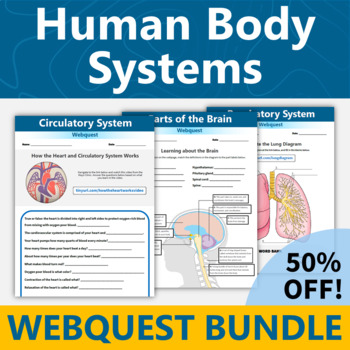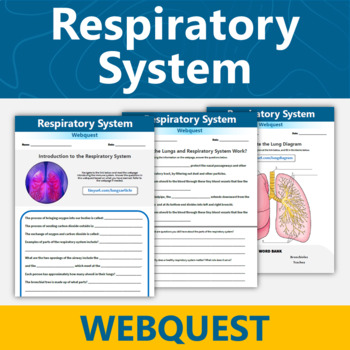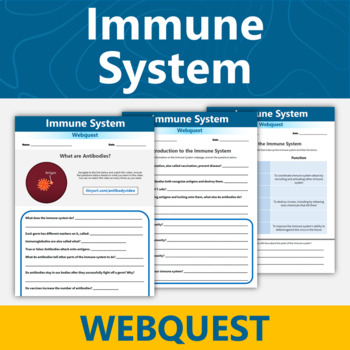Human Body Systems Webquest Activity Value Bundle | 11 Webquests 50% off
What educators are saying
Products in this Bundle (11)
showing 1-5 of 11 products
Description
Save 50% off list prices on these Digestive, Skeletal, Immune, Muscular, Endocrine, Lymphatic, Nervous, Integumentary, Circulatory, Urinary, and Respiratory System Webquests!
This value bundle includes 11 webquests that make teaching about the major human body systems easy and engaging!
Students will access subject matter and student appropriate digital resources, including articles and animated videos. These webquests helps organize what students learn from the digital resources and ensures they maximize the educational value of them. Answer keys are provided.
These resources work great as introductions to the major human body systems, as sub-plans, or as reinforcement activities. A bonus creative letter writing extension activity is included that encourages students to synthesize what they learned!
Both color and black and white printable versions are provided. You can use all included pages or just a few depending on the time available and teaching need. Answer keys are provided for all webquests.
Links are shortened and easy for students to type into the address bar of their browser. Please note that these resource are provided in a static PDF format and are designed to be printed as a packet to allow for easy written student responses. If preferred, digital Easel versions are also provided.
Follow Learning Pyramid to stay in the loop about sales, free releases, and new products!
Also check out the Human Anatomy Diagram Worksheet and Handout Value Bundle!





